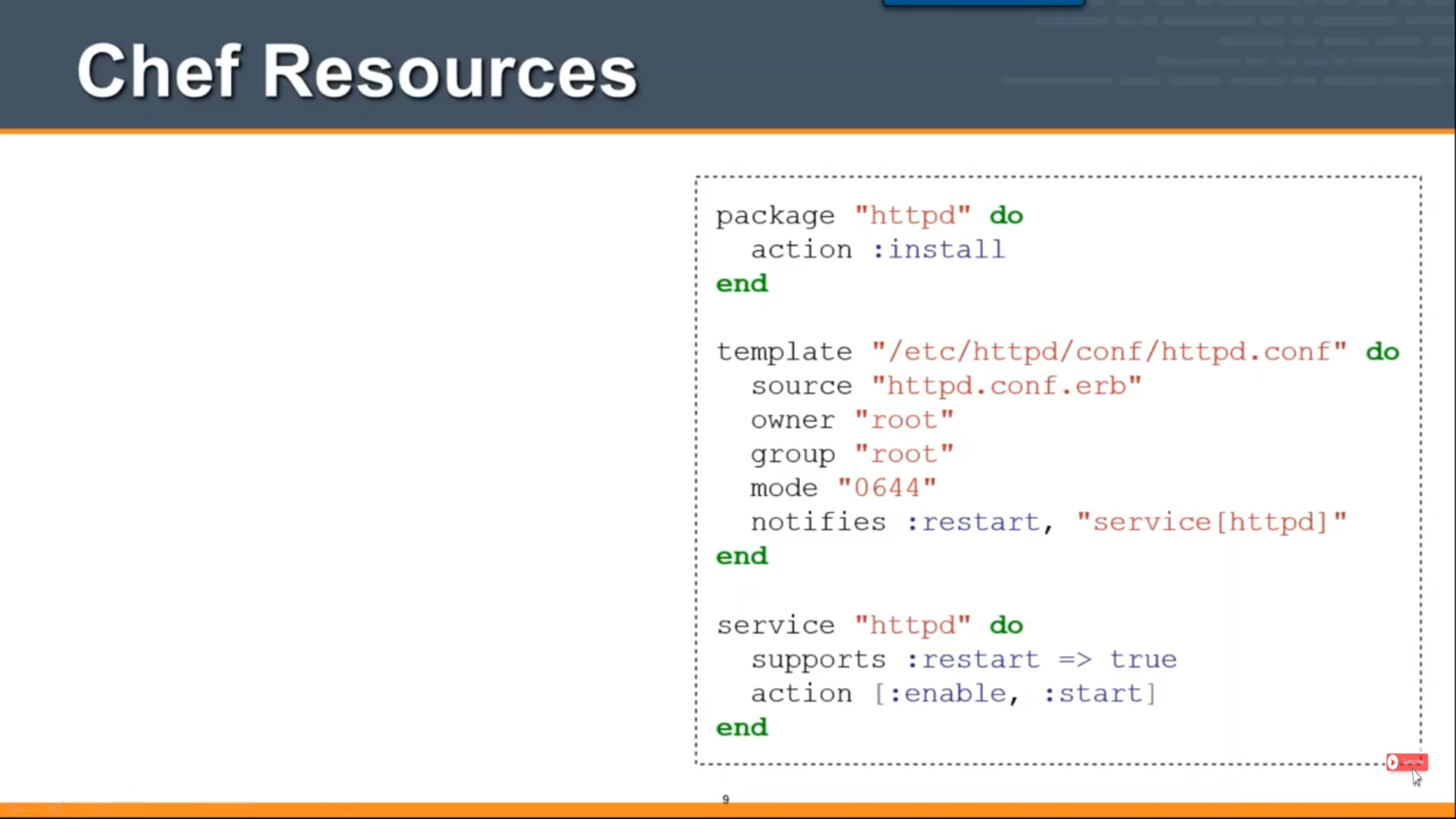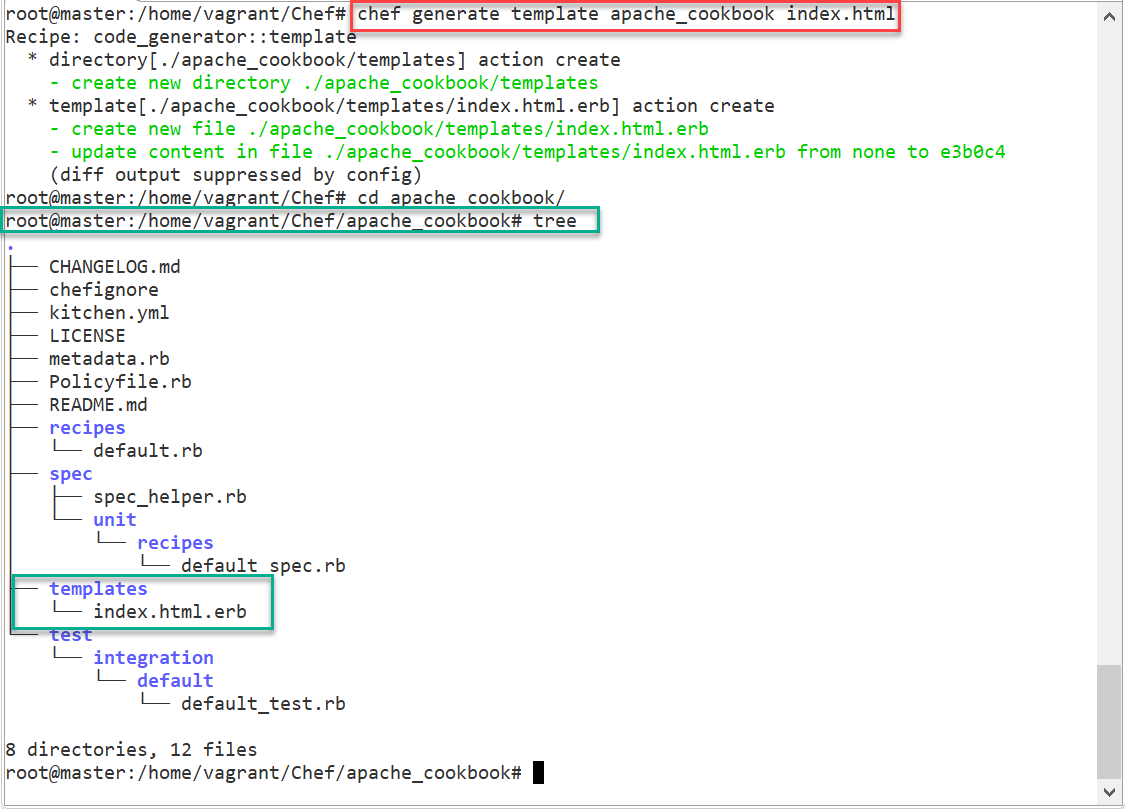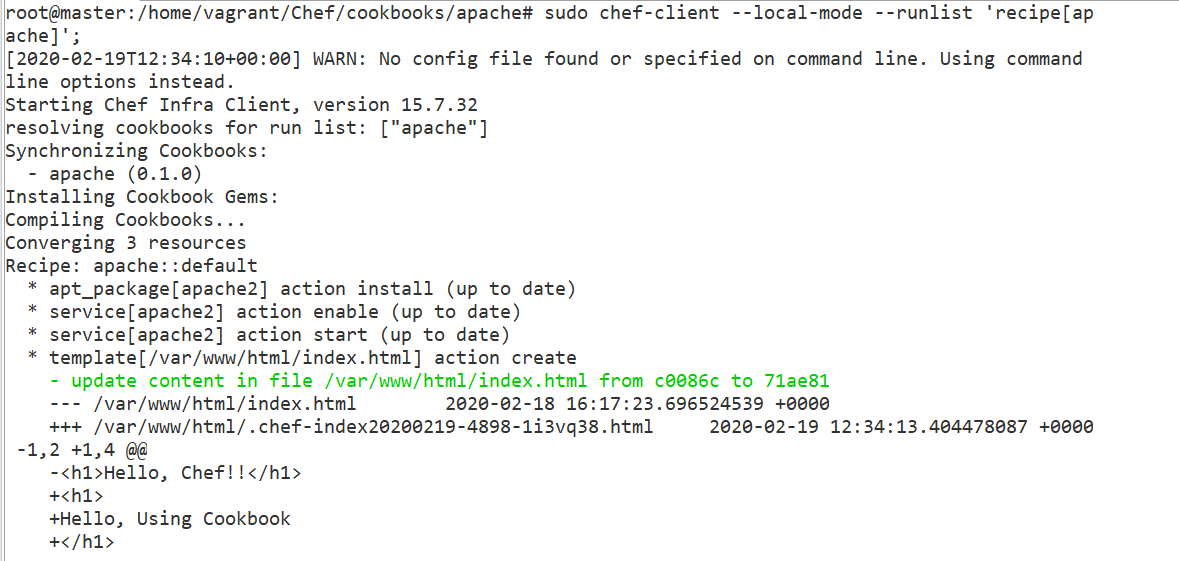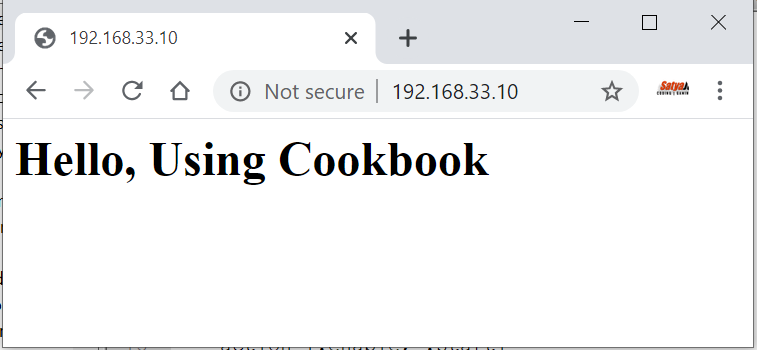Chef – CookBook
Cookbooks are created on the workstation and then uploaded to a Chef server.
From there, recipes and policies described within the cookbook can be assigned to nodes as part of the node’s -run-list”.
A run-list is a sequential list of
recipes and roles that are run on a node by chef-client.
Creating a Cookbook
There are two ways to dynamically create a cookbook.
# Using chef command
chef generate cookbook <Cookbook Name>
# Using knife utility
knife cookbook create <Cookbook Name>
Chef Cookbook – Creating Sample Cookbook
We can generate a Cookbook Using Chef Tool
chef generate cookbook <Cookbook_Name>
Here I am creating Cookbook for Apache Installation, so I’m proving cookbook name as `apache_cookbook `
chef generate cookbook apache_cookbook
In This cookbook we perform below tasks
-
Apache2 pkg should install in host machine
-
Apache2 Should enable & Auto Start
-
Create index.html, & make it as apache Homepage
Cookbook Directory Structure
Cookbooks are organized in a directory structure that is completely self-contained. There are many different directories and files that are used for different purposes.
Go to apache_cookbook directory & observe the File structure.

Recipes
-
A recipe is the main workhorse of the cookbook. A cookbook can contain more than one recipe, or depend on outside recipes
-
Recipes are used to declare the state of different resources.
-
For instance, a resource could say -
the package x should be installed”. Another resource may say -the x service should be running”.
Resources can be of many different types. Some common ones are:
-
package: Used to manage packages on a node
-
service: Used to manage services on a node
-
user: Manage users on the node
-
group: Manage groups
-
template: Manage files with embedded ruby templates
-
cookbook_file: Transfer files from the files subdirectory in the cookbook to a location on the node
-
file: Manage contents of a file on node
-
directory: Manage directories on node
-
execute: Execute a command on the node
-
cron: Edit an existing cron file on the node
You can learn about the different resource types here.

Resource Syntax
A resource is a Ruby block with four components:
typename- one (or more)
properties(with values) - one (or more)
actions.
The syntax for a resource is like this:
type 'name' do
attribute 'value'
action :type_of_action
end
Templates
Template files end with the .erb extension, meaning that they contain embedded
Ruby.
These are mainly used to substitute attribute values into the file to create the
final file version that will be placed on the node.
For example, if we have an attribute that defines the default port for a service, the template file can call to insert the attribute at the point in the file where the port is declared. Using this technique, you can easily create configuration files, while keeping the actual variables that you wish to change elsewhere.
We need to create index.html to place apache2 server using Templates. But In above we don’t have Templates folder.
1.Create Templates Folder
Create a Template called index.html in apache_cookbook(Inside Cookbook
folder/ outside apache)
chef generate template apache_cookbook index.html

2. Write -hello world” inside index.html.erb
# vi templates/index.html.erb
<h1>
Hello, Chef - Using Cookbook
</h1>
3.Edit Recipe file : default.rb
Open recipe file recipes/default.rb & write steps to perform Install & Start
Apache2 server and place index.html
# vi recipes/default.rb
package 'apache2'
service 'apache2' do
action [:enable, :start]
end
template '/var/www/html/index.html' do
source 'index.html.erb'
end
4.Apply complete CookBook on Local System
sudo chef-client --local-mode --runlist ‘recipe[apache_cookbook]’;
Waring: should end with ;

Check Apache2 Status
service apache2 status
* apache2 is running
Now open apache URL, Using CURL

Via Browser
